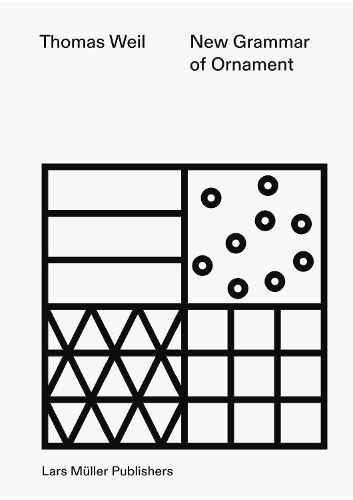Readings Newsletter
Become a Readings Member to make your shopping experience even easier.
Sign in or sign up for free!
You’re not far away from qualifying for FREE standard shipping within Australia
You’ve qualified for FREE standard shipping within Australia
The cart is loading…






Updating Owen Jones’ 1856 classic: the new standard typology of ornament, spanning centuries and cultures. Ornaments are omnipresent: they can be found on buildings, fabrics, jewellery, tiles, ceramics and wallpaper. Scorned at the outset of the modern age, ornament has long since returned to architecture and influences design drafts as much as tattoo motifs. In New Grammar of Ornament, German architect and designer Thomas Weil compares current ornamental objects with the results of archaeological research on ornamental artifacts, and concludes that there is an anthropological constant. From the recurring arrangements of stripes, rectangles, triangles and dots and the frequency of the forms of floral ornaments used, he derives a new grammar of ornament. More than 160 years after Owen Jones’ publication of that name, New Grammar of Ornament is a new reference work. It categorises the variety of ornamental forms used worldwide and places them in a major art and cultural-historical context. Thomas Weil (born 1944) studied architecture at the Technical University of Munich and early on focused on interior design and design. Since 1974 he has been working on the subject of ornamentation, which he has incorporated into numerous facades and walls as an artist. He gives national and international lectures and courses on ornamentation and is a lecturer on ornamentation at the Munich Academy of Design and Art. AUTHORS: Thomas Weil studied architecture at the Technical University of Munich and focused on interior design and design early on. Since 1974 he has been working on the subject of ornamentation, which he has incorporated into numerous facades and walls as an artist. He gives national and international lectures and courses on ornamentation and is a lecturer at the Munich Academy of Design and Art. Heinz Schutz is an art theorist, critic, publicist and lecturer at various universities. He conceived and curated the international research and exhibition project Performing the City. Since 1987 he is a permanent correspondent for Kunstforum International and author of numerous publications and writings on contemporary art. Manuel Will is an archaeologist and paleoanthropologist at the University of Tubingen with a research focus on the cultural and biological evolution of humans in Africa. He is currently leading archaeological excavations in Germany and South Africa, and researching the material culture of Homo sapiens during the Paleolithic. 390 illustrations
$9.00 standard shipping within Australia
FREE standard shipping within Australia for orders over $100.00
Express & International shipping calculated at checkout
Updating Owen Jones’ 1856 classic: the new standard typology of ornament, spanning centuries and cultures. Ornaments are omnipresent: they can be found on buildings, fabrics, jewellery, tiles, ceramics and wallpaper. Scorned at the outset of the modern age, ornament has long since returned to architecture and influences design drafts as much as tattoo motifs. In New Grammar of Ornament, German architect and designer Thomas Weil compares current ornamental objects with the results of archaeological research on ornamental artifacts, and concludes that there is an anthropological constant. From the recurring arrangements of stripes, rectangles, triangles and dots and the frequency of the forms of floral ornaments used, he derives a new grammar of ornament. More than 160 years after Owen Jones’ publication of that name, New Grammar of Ornament is a new reference work. It categorises the variety of ornamental forms used worldwide and places them in a major art and cultural-historical context. Thomas Weil (born 1944) studied architecture at the Technical University of Munich and early on focused on interior design and design. Since 1974 he has been working on the subject of ornamentation, which he has incorporated into numerous facades and walls as an artist. He gives national and international lectures and courses on ornamentation and is a lecturer on ornamentation at the Munich Academy of Design and Art. AUTHORS: Thomas Weil studied architecture at the Technical University of Munich and focused on interior design and design early on. Since 1974 he has been working on the subject of ornamentation, which he has incorporated into numerous facades and walls as an artist. He gives national and international lectures and courses on ornamentation and is a lecturer at the Munich Academy of Design and Art. Heinz Schutz is an art theorist, critic, publicist and lecturer at various universities. He conceived and curated the international research and exhibition project Performing the City. Since 1987 he is a permanent correspondent for Kunstforum International and author of numerous publications and writings on contemporary art. Manuel Will is an archaeologist and paleoanthropologist at the University of Tubingen with a research focus on the cultural and biological evolution of humans in Africa. He is currently leading archaeological excavations in Germany and South Africa, and researching the material culture of Homo sapiens during the Paleolithic. 390 illustrations